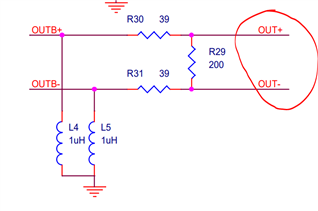I want to use the two independent amplifiers of LMH6521 to integrate and design a DIP switch adjustable amplifier. But after design, the signal can be output from OUTA+ and OUTA-, and then connected to INB+ and INB-, but the same circuit, the signal cannot be output from OUTB+ and OUTB-. When I disconnect the A level and directly connect the signal to INB+ and INB-, I can't get the output. Can you help me see where the design of the schematic diagram is unreasonable? Thanks.
Because of the holidays, TI E2E™ design support forum responses will be delayed from Dec. 25 through Jan. 2. Thank you for your patience.
-
Ask a related question
What is a related question?A related question is a question created from another question. When the related question is created, it will be automatically linked to the original question.





